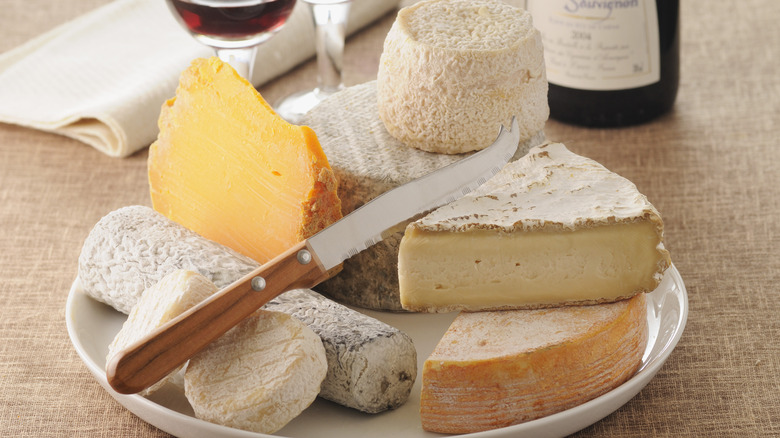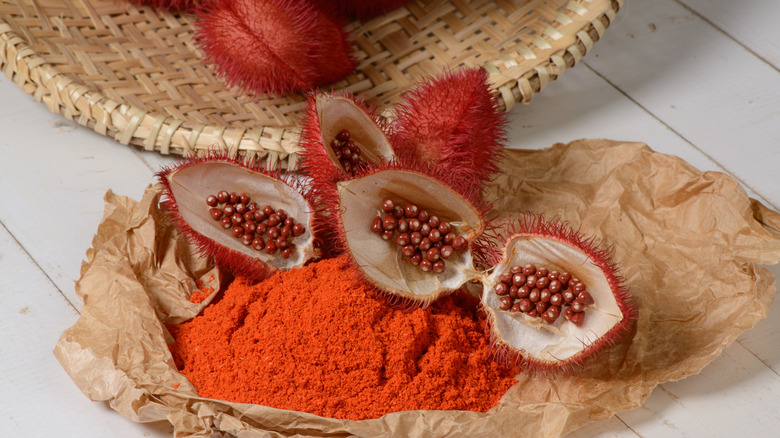The Biggest Difference Between Yellow And White Cheese
Cheese made in England several centuries ago had a naturally orange or yellow hue due to the diet of cows, according to NPR. Various cow breeds, including Guernsey and Jersey, ate mostly grass that was high in beta-carotene, which then gave the cows' milk an orange-ish color. Of course, this milk was then used to make cheese, and the bright orange color was synonymous with very high-quality cheese. However, around the 17th century, some cheesemakers from England found that if they remove the cream, they could sell that by itself and even make butter with it, which would lead to more profits.
However, the cream in the cows' milk contained the orange pigment. The remaining milk ended up being white as did the cheese made from that milk, thus becoming the reason that cheddar cheese isn't naturally yellow. Cheesemakers then had to come up with a way to make their cheese yellowish-orange again, so that their customers wouldn't think they had a low-quality product. Their solution was a unique ingredient that many cheesemakers still use today to make their cheeses orange.
Yellow cheese contains a coloring agent
According to NPR, the solution that the 17th-century cheesemakers came up with was to add colorings from different orange or yellow ingredients such as marigolds, carrot juice, saffron, and annatto. Many still use these same ingredients today to color their cheeses. Annatto comes from a shrub known as achiote and was reportedly used as body paint, among other things, by the Aztecs, per Today. Annatto is mostly grown in South American countries such as Brazil, Colombia, Bolivia, Ecuador, Guyana, Peru, and Suriname, but it's also grown in India, Jamaica, Mexico, Kenya, the Philippines, and the Dominican Republic.
Among the oldest dyes used by humans, annatto is a natural ingredient that doesn't change the flavor or texture of cheese. How long the cheese is aged, where it's made, how it's packaged, and where it's sold are a few of the things that would change a cheese's taste. On its own, annatto has a "slightly nutty, sweet peppery taste," but the amount that's used is so small that you won't be able to taste it, according to Young's Jersey Dairy. In addition to cheese, annatto can also be found in Cheetos, Goldfish crackers, graham crackers, mustards, lemon-flavored cookies, Velveeta cheese, and some seasonings, per Very Well Health. While annatto is technically classified as a seed, it's important to note that some people with nut allergies may have reactions to annatto.

